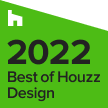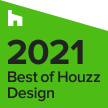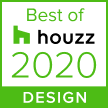A Beautiful Building Metric?
by Laura Varsafsky, LEED AP
Whether you know sustainable architecture as the oldest and best building practices that have stood the test of time, the latest and greatest technological innovations, or simply ‘good design’, the rise in popularity of green-building third-party verification metrics, such as LEED, The Living Building Challenge, Net-Zero and Passive House (to name a few) has been astounding, and should be given a good amount of credit for bringing ‘green’ to the cultural mainstream. LEED certification has been especially popular in the commercial property and real estate market, in part due to its marketing value. In fact, LEED has become so popular it has created its own niche marketplace. Interestingly, NPR aired part I of a story yesterday on just this topic – Green Building: A Real Estate Revolution? – tune in this afternoon for Part II. As LEED becomes more of a household name, discussions on its popularity and validity are sprouting up. Earlier this spring, the blogosphere couldn’t get enough of starchitect Frank Gehry’s dramatic criticisms, and various follow-ups here & here…
I’m excited to see these metrics gain popularity and raise the bar in arenas such as energy usage and material selection, but a well designed building has something more to it that’s harder to define. There’s an age-old argument that I take stock in, posed by many architects over time (I was first enlightened during a presentation by architect Peter Bohlin, of Bohlin Cywinski Jackson). The argument goes something like a beautiful building is inherently a sustainable building because, in concept, a beautiful building will be reused again and again, instead of being replaced. In the world of sustainability, we know that reusing what is already there as the strategy which is most sustainable, resourceful, and holistic. Per this argument, designing a beautiful building is an important sustainable strategy. How many communities are fighting to preserve those strip malls? Convenient – yes, energy efficient – perhaps, but beautiful – no! This presents a challenge to metrics used in green-building third party verifications. If ‘beauty‘, (which is subjective and undefinable) is integral to a sustainable building, how can it exist in a system of definitions and verifications? Defining metrics for technology, data, and energy is one thing, but how can beauty be quantified and certified, or at the very least be encouraged and deemed important?
This school of thought has made its way into some green-building metrics, such as the Living Building Challenge. I encourage you to read more about it and share your thoughts with us. Should beauty be part of green-building metrics?















Very interesting and worth reflection. Certainly, and without considering how new materials and technology can push a building into the concrete-grave, the beauty of what once was stunning, innovative and “popular”, eventually looks like it came from the era it was all those things. After we’ve moved on in creativity substituting for not just looks, but better technology to support the infrastructure that we’ve come to expect and need. This, creativity, after all, and perhaps even as a stand alone, is in part what keeps our world going around, keeps people employed, maintains the creative edge and adds purpose to our lives. Designers and Architects perhaps live here more frequently then others, but our lives are based around actively creating aesthetic beauty. Looks like the next creative challenge to add to the real meaning of sustainability!
Very thought provoking… how does beauty fit into green design? Is it important that it be measurable?? Can it be?
It does seem unfortunate that LEED has become the “Mainstream” understanding of “green” when it lacks some sort of demand for beauty and appreciation. That being said, without out hard quantifiables- how is the “business” and “commercial” world supposed to handle the element of “green-ness”? While the beauty of art is hard to quantify- perhaps is is a necessary component to our commercial marketing system… ????
Absolutely, beauty should be a requirement for green building!!
Timeless designs are important and those that reflect a community or family’s culture can also become it’s strength, its backbone, it’s connective tissue. Places that are beautiful are loved, honored, embraced and most importantly USED. That is a key criteria.
My personal experience tells me that when the people who will use the space are included in the planning and dialogue about how it looks and is designed, they connect on an even deeper level than could have happened otherwise. So, if that is a measure of the beauty of a place, then inclusivity is a piece of this puzzle and there could be a format created that requires participation by the user group and surrounding community. Is that a quantifiable metric?
1win az bank transfer https://1win3041.com/